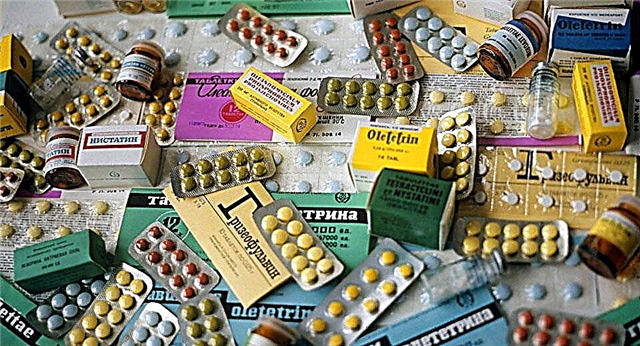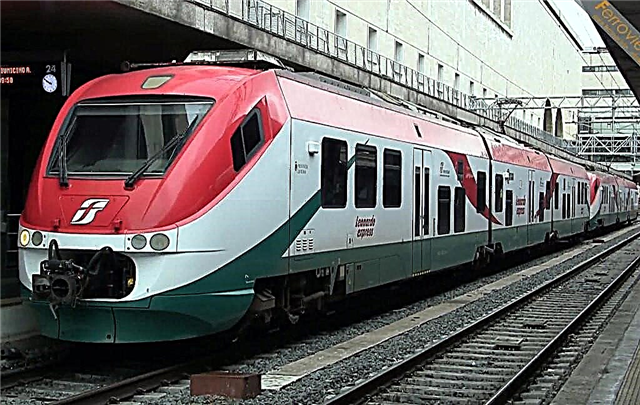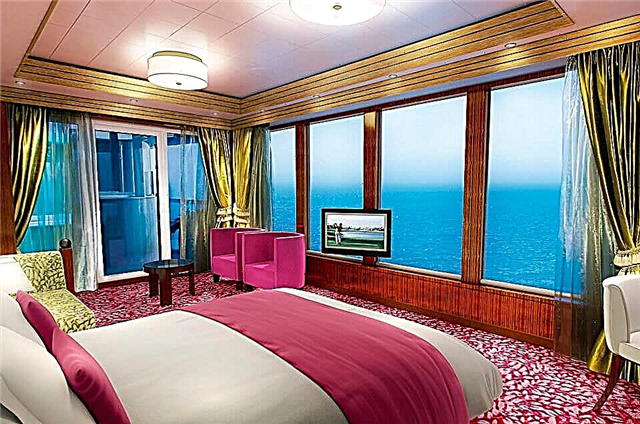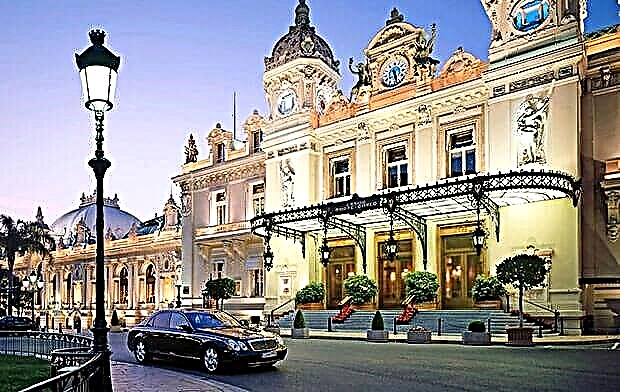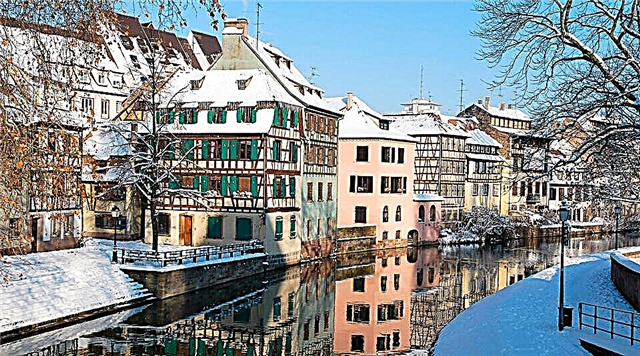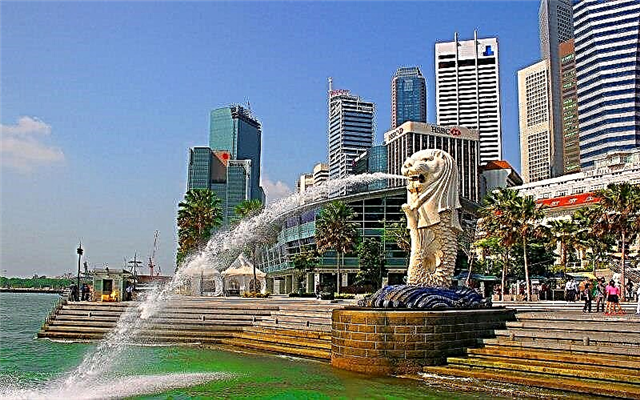One of the oldest Russian monasteries is located on the banks of the Molokhta River, 20 km east of Ivanovo. The men's monastery is located near the traditional routes of the Golden Ring of Russia, completely restored and attracts many tourists and pilgrims. On the territory of the monastery, you can see beautiful churches of the 17th-19th centuries, as well as get acquainted with the life of the Orthodox ascetic, the 17th century icon-monk Iakim Shartomsky.
The history of the Nikolo-Shartom monastery in the XIII-XVI centuries.
According to legend, in the 13th century, a Shuya peasant woman found at the confluence near the Shartoma River a small icon depicting the face of Nicholas the Wonderworker. A monastery was founded on the site of the amazing find.

Bird's-eye view of the Nikolo-Shartomsky Monastery
Written sources mention the monastery in 1425. Specific princess Nizhny Novgorod lands - Maria drew up a letter authorizing the Suzdal Spaso-Euthymius monastery enjoy some of its villages. This document is signed by the abbot of the monastery - Archimandrite Konon. This fact speaks of the high position of the monastery, since the dignity of archimandrite was conferred on the abbots of only the largest Russian monasteries.
It is known that the monks who lived here enjoyed the favor of the Russian sovereigns. Vasily III, Ivan the Terrible and Fyodor Ioannovich made contributions to the monastery and granted it certain privileges. For example, in 1506 the monastery received a "non-conviction" certificate. The royal document indicated that only the Grand Duke or the boyar authorized by him could judge the monks and their abbot. In the 16th century, the Nikolo-Shartom monastery became very influential, and under its leadership there were nine small monasteries of the vast Vladimir diocese.

View of the Nikolo-Shartomsky Monastery from the Molokhta River
In addition to the kings, the princes Pozharsky, Khovansky and Gorbatov-Shuisky helped the monks. The monastery's prosperity was also facilitated by a large fair, which was held every year under the monastery walls. It began on May 9, the main temple holiday. The merchants who came here traded furs, horses, iron, salt, fabrics and soap. The monks' products were also sold at the fair - grown vegetables, sewn clothes and handicrafts.
Icon painter and monk Joachim Shartomsky
At the beginning of the 17th century, the monk Joachim settled in the monastery. It is believed that he took monastic vows on the Rostov land and was one of the disciples of the Monk Irinarch of Rostov. Joachim led a reclusive lifestyle, wore chains for years, fasted a lot and devoted his free time to prayer. The total weight of metal fetters on the legs, arms, as well as heavy crosses, which Joachim constantly wore on his body, was more than 150 kg.

In the monastery, the monk painted icons. To create images, he used the so-called "Grecophile" style of writing, which was very different from the local icon-painting traditions that existed at that time. The works of Joachim are made with great skill and are completely different from the images that were painted by the posad bogomaz artisans. Art critics suggest that Joachim could learn painting from one of the visiting Greeks.
In 1619, the Church of the Savior in Shuya received the Cypriot Icon of the Mother of God from Joachim. Three years later, the iconographer painted the icon of the Kazan Mother of God for the cathedral in Vyaznikovskaya Sloboda, which was ordered by Princess Irina Miloslavskaya. The third icon was created by Joachim for his native monastery. Another icon, which also depicted the Kazan Mother of God, was painted by the monk for the inhabitants of Suzdal. The monk went to this city to live after the Nikolo-Shartom monastery.

From left to right: bell tower, Cathedral of St. Nicholas the Wonderworker, in the foreground the Church of the Transfiguration of the Savior
All the icons created by Joachim were later recognized as miraculous. Two of them have survived today. One is in the Suzdal Spaso-Evfimiev Monastery, and the other is in Vyazniki. The Monk Joachim became one of the most revered saints in Yaroslavl, Suzdal and Ivanovo land. He is also considered the patron saint of the Nikolo-Shartom monastery.
The history of the monastery of the 17th-20th centuries.
The first half of the 17th century brought a lot of troubles to the monastery. During the Time of Troubles, it was destroyed and plundered by the Polish-Lithuanian troops. In addition, the invaders took all the monastery peasants into captivity. In 1624, when the monastery was just beginning to revive, robbers came here. They killed several monks and took away the poor monastic treasury.

In 1649, there was a big fire that destroyed almost all of the monastery buildings. After that, it was decided to rebuild the monastery of stone and place temples and cells closer to the banks of Molokhta.
The first to be erected in 1651 was the five-domed St. Nicholas Cathedral. Soon a second stone church appeared in the monastery - the warm church of the Kazan Mother of God. The construction of the gateway Church of the Transfiguration took more than a century, and it was consecrated only in 1813. The architectural ensemble of the monastery was completed by a high bell tower-candle.

In 1764, Catherine II carried out a church reform that affected absolutely all churches in the country. Extensive land holdings were taken away from the monastery, and the small monasteries subordinated to it were turned into independent temples. The monastery itself became a third-grade one. Monks lived in it under the direction of the abbot. The fraternal community consisted of 12 former peasants from the surrounding villages. The monks independently cultivated the land, raised bread and grazed cattle.
In the 19th century, a railway was built nearby, and the annual Nikolsky fairs lost their significance. Trains delivered goods faster and cheaper than visiting merchants on navigable rivers. Due to the closure of the fair trade, the financial situation of the monastery deteriorated significantly, and construction work here began to be carried out only with private donations.

From left to right: Cathedral of St. Nicholas the Wonderworker, bell tower, Church of the Transfiguration
In the 1920s, the monastery was closed. The authorities confiscated valuable liturgical items and icon frames from it, and burned the icons themselves. The premises were used for granaries and warehouses. Local residents settled in some buildings. Over the years, the entire monastery complex decayed and was in a dilapidated state. The revival of buildings and territory began in 1991, when they were returned to the monastery.
Architectural monuments on the monastery territory
The territory of the monastery is surrounded by a stone fence with three turrets. The main temple is located 30 m from the Holy Gate. This is a five-domed two-pillar St. Nicholas Cathedral, which was built in the traditions of Russian-Byzantine architecture in 1651. The majestic temple is distinguished by simplicity of forms, grace of lines and modest decor of the facades. The three-absid altar is twice understated in comparison with the main volume. Inside the temple, there are remains of paintings from the early 19th century.

Cathedral of St. Nicholas the Wonderworker with a bell tower
Next to the cathedral there is a four-tiered bell tower, erected in the 18th century. Only the lowest tier of the building is made of stone, and the rest of the tiers are wooden. Above, the tall building is decorated with Doric pilasters and columns. And the bell tower is crowned with a drum with an onion dome.
The winter temple of the Kazan Mother of God appeared here in 1678. Adjacent to it is a refectory and a church consecrated in honor of Gregory of Akragantiysky. Like the main cathedral, the three-absid altar and the refectory are two times lower than the quadrangle of the temple. In 2007-2009, masters from Palekh made interior paintings here.

Church of the Kazan Icon of the Mother of God
The Holy Gates are completed by the picturesque Transfiguration Church. It is completed by an octagonal drum and one cupola.The foundations of all monastic temples are lined with boulders, granite and white stone.
Current state and visiting regime
Nowadays, the monastery is active, and more than a hundred inhabitants and monks live on its territory. It has its own vegetable garden, a greenhouse, an apple orchard, a smithy, a carpentry workshop, a cowshed, a stable, an apiary, a bell casting workshop and a bakery.

The monks are doing a lot of educational work in the cities and villages of the Ivanovo region - they open Sunday schools, create Orthodox libraries and lecture halls. The monastery courtyards are 16 churches located in the ancient cities of Shuya and Gavrilov Posad, as well as in Shuisky, Privolzhsky and Teikovsky districts. The brethren living in the farmsteads restore and restore churches, are engaged in fishing and wood carving. In the village of Kleshchevka, thanks to the monks, a boarding school for boys has been operating for more than 10 years.
Divine services in the monastery are held daily. On weekdays at 6.45 and 16.45, and holidays at 8.00 and 17.00.

Monastery building
How to get to the monastery
The monastery is located in the village of Vvedenie, Ivanovo region, on Shtatnaya street, 19. This place is located near the confluence of the Molokhta River and Teza. Buses and minibuses go to Vvedenie from Shuya and Ivanovo.
Attraction rating:

